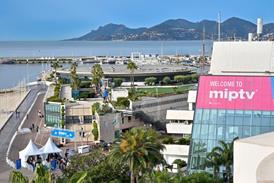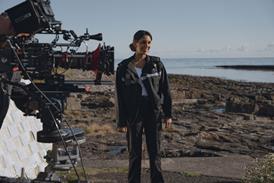Coverage of rioting around UK was poor compared with the capital’s.
It’s ironic that BBC1’s latest reality concept features a local community pulling together to complete a monumental task. Only this is Village SOS, a warm-hearted show following a rural community restoring a water mill, rather than Londoners taking to the streets, broom in hand, to embark on #riotcleanup.
With violence erupting rapidly and sporadically all across the capital on Monday night, the only place to be was with a rolling news channel. The unprecedented speed, unpredictability and geographic spread of the rioting combined to make it one of the most difficult stories UK news teams have had to cover in living memory, as BBC News Channel head Kevin Bakhurst told Broadcast on Tuesday.
Nevertheless, both the BBC and Sky succeeded in delivering comprehensive and compelling scenes from their teams on the ground and their helicopters in the skies, seamlessly integrated with mobile-phone footage from residents and off-duty reporters. Perhaps not surprisingly, the BBC News channel reached a record 8.5 million.
Those on the streets had been riot trained, but they were unable to employ the tactic of sticking behind police lines as they were either non-existent or in flux - a confusion in tactics born of the criticisms following the student demonstrations. The weekend’s ineffective ‘containing’ tactics and resulting destruction saw several reporters, including Sky’s Mark Stone and CNN’s Dan Rivers, come under attack and beat a retreat.
Tuesday was a different story. The BBC, like the police, was guilty of throwing all its resources at the capital, at the expense of the rest of the country. It felt like the rolling news of the old days - stringing out limited material, earlier images of police vans arriving and kids on bikes relayed over and over again, coupled with a reliance on the phone-in.
At one point, the only live footage from Birmingham was the gonzo journalism of the incredible Sangat TV channel (Sky 847), taking us to the streets in a van, hunting down rioters and making speeches without drawing breath, in front of burning skips. To be seen to be believed.
Of course, for the mainstream channels, a lack of resource is only a partial explanation for the lack of coverage, and it’s important to note the bravery of the teams in the north-west and Birmingham. With camera crews from ITV, BBC and Sky all facing attack on the ground, the lack of live footage really brought home the dangers posed to those just trying to do their jobs.
Nevertheless, that the BBC failed to capture live footage of the riots, despite them taking place on the doorstep of Salford’s multi-millionpound MediaCityUK, is an irony not lost on many. It was an all too tangible illustration that licence-fee payers are not treated equally.
Lisa Campbell is editor of Broadcast

























3 Readers' comments